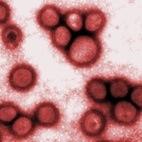VACCINOLOGY
The subject of vaccines and vaccination protocols has become a hot topic in dog circles over recent years. Concerns have been raised about the increased incidence of immune-mediated diseases such as thromobytopenia (low platelet counts), hemolytic anemia (immune-mediated red blood cell destruction), immune-mediated arthritis and immune mediated skin disease as well as allergic vaccine reactions, seizures and other problems possibly related to vaccination. This discussion will provide some insight into the controversy and hopefully provide a rational approach to vaccination. The first point that must be made is that the vaccines available today are very effective. Since the advent of...




